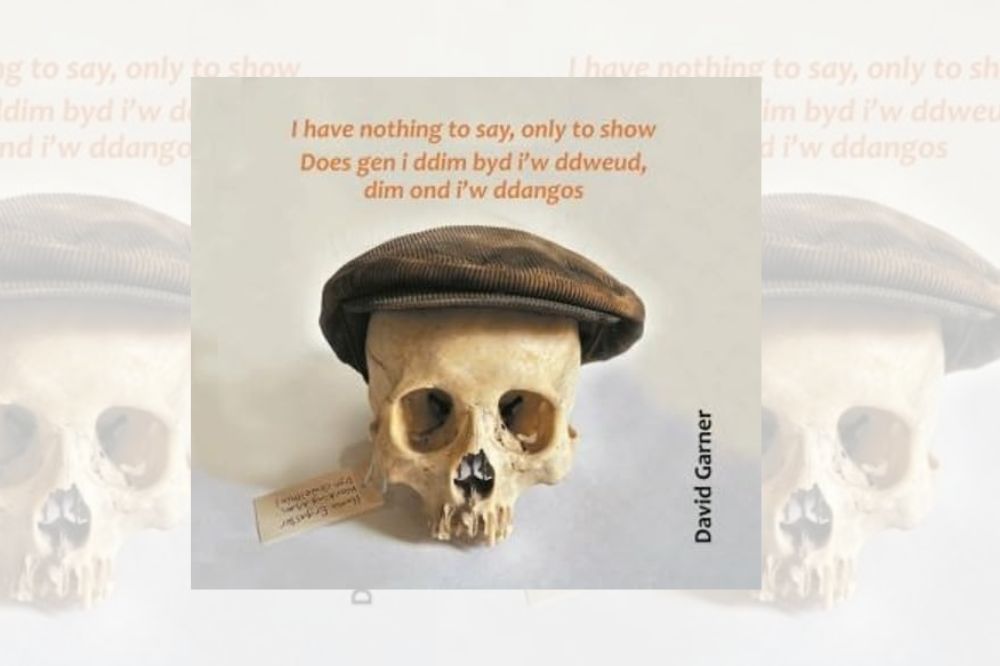 I have nothing to say, only to show Does gen i ddim byd i’w ddweud, dim ond i’w ddangos, David Garner, H’mm Foundation
I have nothing to say, only to show Does gen i ddim byd i’w ddweud, dim ond i’w ddangos, David Garner, H’mm Foundation
Desmond Clifford
David Garner is among Wales’ most established contemporary artists. He typically uses discarded materials, often industrial remnants, to produce installations. His most recent Welsh exhibition was at Turner House in Penarth. His work is strongly political though humour is an important aspect of his work and rarely absent.
This stylish and handsome book, published by the H’mm Foundation, provides a beautifully photographed and produced insight to his work. It includes an interview with the artist as well as a critical foreword by Hugh Adams and an essay by Sacha Craddock.
Cultural independence
Garner reproduced and reimagined images of Aneurin Bevan; one depicts him weeping for the state of the NHS. Another image ignited a censorship row during the UK election last year. A poster-type image depicts Bevan’s famous words on the Conservatives, “lower than vermin” and a Welsh equivalent, “baw isa’r domen”. Just ahead of the UK election, this put the National Museum into a spin and, apparently – and bizarrely – they referred the matter to the Welsh Government. A predictable bureaucratic decision was taken to withdraw the image until after the election, to the artist’s intense anger. It was possibly not the most glorious moment in the history of Welsh cultural independence.
Collaborations with other artists are a source of inspiration for Garner. He has for some years worked in collaboration with Eisteddfod-winning poet Rhys Iorwerth, matching installations with banners carrying poetry in the style of trade union banners. One of these creations shows a rusting ballot box, with an X scratched onto its surface, below a banner revealing a poem Rhydu/ Corroded – about a politician who has just lost his seat (it is a he):
“Mae, yn ddiau, ar awr ddu,
yn rhaid i bethau rydu.
Doubtless you shall find, in a dark hour,
that all things must rust.”
Of course, this works as an image in a way that the written description fails to convey.
Influences
The book includes an interview of Garner by Jon Gower. This offers insights into Garner’s work and his general approach. He acknowledges Samuel Beckett as a major influence, since he borrowed Waiting for Godot from Bargoed Library when he was aged eighteen.
Much of his art is rooted in Wales’ often bleak experience of industrialisation and its subsequent decay, but lightened by humour. Like Beckett, he says, “there is an element of resistance and certainly humour among the despair”. In a musical setting, the Manic Street Preachers remind me of Garner’s work and create a similar, or complementary, effect. Boots, books and slogans all feature in Garner’s work, reworked into unexpected contexts.
Garner talks about his lengthy collaboration with poet Rhys Iorwerth. Equally he has collaborated with harpist Rhodri Davies to produce filmed works of Garner’s art accompanied by Davies’ musical improvisation. Indeed, film generally – especially Charlie Chaplin – has been another important influence for Garner.
David Garner has produced a substantial body of work over an artistic lifetime rooted in the industrial world he grew up in and the remnants of that world which now surround us. His work is often raw and forthright, funny, political and purposeful. Art books struggle, especially for installation artwork, to convey the full depth and impact of the work, but this superbly photographed and fully bi-lingual volume is a beautiful companion for any admirer of David Garner.
I have nothing to say, only to show Does gen i ddim byd i’w ddweud, dim ond i’w ddangos is published by the H’mm Foundation.
Support our Nation today
For the price of a cup of coffee a month you can help us create an
independent, not-for-profit, national news service for the people of Wales, by
the people of Wales.

